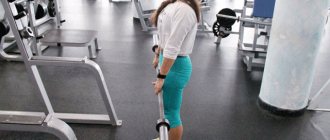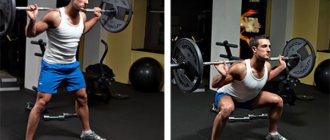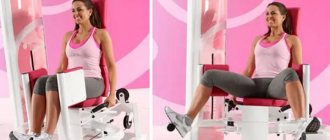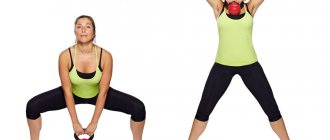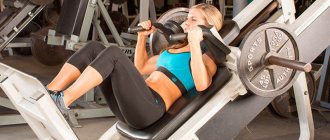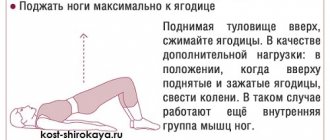The bench press is an effective exercise that develops strength and muscle mass in the shoulder and chest girdle. It gives a good load on the muscles of the core and abs, allowing you to form a beautiful relief. The bench press is a basic exercise that is used to train strength and endurance, allowing you to maximally work the pectoralis major muscle, triceps and anterior deltoids. Beginners should know the basic principles of the classic bench press, and those who have been training for a long time should check the correctness of the technique if the results are not noticeable.
Bench press mechanics - how to do it correctly
There are two main bench press techniques:
- bodybuilding;
- powerlifting
For bodybuilders, when pressing, the main load falls on the shoulder girdle for detailed development of the triceps, biceps, chest and anterior deltoids. In powerlifting, the load is distributed evenly to work the muscle mass of almost the entire body. Let's look at how to do the bench press correctly to work the right muscles.
Body position and preparation
The preparatory stage for the exercise is no less important than the process itself. Before lying on the bench, the athlete must check the stops and hooks and adjust the height. The bench should be located exactly in the middle relative to the barbell. Misalignment will result in incorrect balance. For maximum efficiency, the bench is located at a 30-degree incline. The bench press on a horizontal bench carries less load. It is difficult to lift a lot of weight on an incline, so for maximum results, trainers recommend alternating training on a flat and an incline bench.
Benching safety is a priority. Beginners are recommended to perform the exercise only with a spotter. It is located behind the headboard and helps you pick up and put down the barbell. During the entire press, it maintains the weight. The life and health of an athlete and his safety from injury may depend on it, so you should not neglect the help of an experienced athlete or coach.
Once the equipment and spotter are ready, it's time to get into the correct position on the bench. The athlete lies down so that the support points - head, lower back, shoulder blades and legs - feel the bench. If one or more points are torn off, the position is occupied incorrectly. Some bodybuilders believe that arching your back and lifting more weight will bring benefits. A fairly popular opinion is fundamentally wrong, as confirmed by human anatomy. When the back is arched, the weight is distributed unevenly, the main load goes to the spine, not the muscles, so efficiency decreases.
The correct position on the bench is: the head, shoulder blades, lower back and legs are pressed tightly to the bench, the chest is arched forward. The same position remains throughout the entire exercise.
Elbows and grip
A lot depends on the grip and correct placement of the elbows in the exercise. Starting with safety, ending with efficiency in working out muscles, comfort and protection from injury.
The bench press technique in bodybuilding varies depending on the goals that the athlete sets for the exercise:
- medium grip - placing your hands slightly wider than your shoulders, it works the chest muscles well;
- wide - much wider than the shoulders, required if you want to work on the front deltoid;
- narrow - puts stress on the triceps, requires good preparation and strong arms, it is highly not recommended to perform without a spotter.
To avoid injury, you need to carefully monitor your hands, or more precisely your elbows. They should be located clearly in one plane, and when lowering the bar, they should diverge only to the sides, at the same time, without overweight in any direction. To do this, you need to grab it so that your grip visually divides the barbell into segments of the same size.
It is not recommended to use a “monkey grip”; it will not allow you to control the barbell. The inner side of the palms should cover the bar, the thumb and index finger should form a closed circle around the bar, the so-called “titanium grip”.
Many people believe that the wider the grip, the harder the chest works. However, this greatly reduces the amplitude. To work the chest muscles, it is necessary to bring the shoulder blades together to increase the stretch of the chest muscle fibers, only in this way the muscles will receive maximum load.
Breath
Any trainer will tell you that proper breathing is the key to effective training. Many people ignore these recommendations, performing the exercise with uneven, confused breathing. As a result, the muscles do not receive enough oxygen, their development and growth slow down. With proper breathing, when oxygen enters during the relaxation stage, muscle mass grows faster, and there will be less pain after training during the recovery period.
Correct breathing during the bench press: free, lifting with a deep exhalation, and lowering the bar while inhaling.
Movement mechanics and tempo
In the mechanics of lifting the barbell, the opinions of coaches and professional athletes differ greatly. Some argue that the barbell should be lowered slowly and raised with a jerk. Others insist that the pace should be even throughout the exercise.
If we look at human anatomy, any jerking is dangerous and leads to muscle strain and joint injuries. At a slow and measured pace, the body receives a high load, putting maximum effort not only to lift the weight, but also to maintain it throughout the entire up and down movement.
Therefore, it is correct, effective and safe to lift the weight slowly, without straightening your elbows completely. Lower it in the same rhythm, without dropping it on your chest, but only lightly touching it. Then repeat the lifting of the barbell while lying down. It is better to take less weight, giving an even load on the muscles, than to “rip a hundred from the chest,” resulting in injuries to joints and ligaments without working the necessary muscles.
Information in the crossover through the lower blocks
This upper pectoral exercise focuses on the upper chest and is used to clearly separate the left and right pectoralis major muscles in the center of the body. Recommended for advanced and experienced athletes at the end of chest training.
Exercise technique
1. Attach the corresponding handles to the lower cable carabiners. Stand firmly in the center of the crossover and take a step forward to give your body a stable position. 2. Slightly lean your body forward, fix a slight angle at your elbows and keep it constant throughout the entire approach. 3. Take a deep breath and, holding your breath, bring the handles together in front of you, at chest level. At the moment of bringing together, the handles should lightly touch or even cross. 4. At the moment of contact, pause, hold a peak contraction in the muscles for a couple of seconds, exhale and slowly return the handles to their original position. 5. The body, legs and elbows are motionless throughout the entire approach. All movements are performed exclusively in the shoulder joint.
Technique tips
- Keep your core tense at all times, even in the negative phase when you return the handles to the starting position.
- If you perform the exercise with too much weight, you can break your technique and injure your elbow or shoulder joints.
- By bringing your arms too high, to chin level or even to eye level, you shift the emphasis of the load to the upper edge of the pectoral muscles in the collarbone area.
- To engage the serratus muscles, be sure to try not only to bring together, but also to cross your arms while bringing the handles together.
- To properly work out the entire volume of the pectoral muscles, it is recommended to alternate information in the crossover through the upper and lower blocks.
How to prepare for the exercise, on what machines
Beginners, and even many professional athletes, forget about a simple truth: if you constantly load one muscle group, the muscle fibers get tired and stop growing. The result will be if the muscles are completely restored after the load, and at this time other areas are worked out. The body will resist disproportion, so results can only be achieved by evenly distributing the load.
Before starting the bench press, it is necessary to carefully prepare the muscles for power loads. Unprepared athletes with flabby muscles who pick up a barbell will not achieve a positive effect. There will be a result, but it will be sprains and pain instead of muscle growth.
To bench press, a person who has not been involved in sports before needs to conduct gentle strength training for several months, helping to tone the muscles and prepare them for the load. Exercises for developing chest muscles are suitable for this:
- push-ups from the floor and parallel bars;
- extension on the block;
- pullover;
- pull-ups on the horizontal bar;
- butterfly;
- exercises with dumbbells, raising arms to the sides;
- raising arms on the simulator.
Don't forget about your legs, back muscles, and abs. It is better to work out a training program so that at first you do barbell bench presses and pectoral muscle exercises once a week. Add one circuit workout and the rest to work on other departments. Simultaneously working out the entire body is great for progress, and the muscles will recover and grow while the load is placed on other organs.
Pushups
This exercise for pumping up the pectoral muscles is basic and involves the middle, bottom and top of the chest, as well as triceps, anterior deltoids, forearms and abs. Recommended for everyone from beginner to advanced athlete at the beginning, middle or end of a chest workout.
Exercise technique
1. From a standing position, kneel with your feet together. Take a lying position with your hands shoulder-width apart. The back is straight, the head does not look at the floor, but forward. 2. Take a deep breath, hold your breath and lower your body to the floor until your chest touches it. 3. Without delay at the bottom point, return to the starting position with a powerful movement. 4. Exhalation must be done at the moment of overcoming the most difficult section of the movement.
Technique tips
- You can shift the emphasis of the load to the upper chest by placing your feet on an elevated platform.
- You can shift the emphasis of the load to the lower part of the chest by placing your hands on an elevation.
- You can shift the emphasis of the load to the outer part of the pectorals by placing your palms wider than your shoulders.
- You can shift the emphasis of the load to the inside of the pectorals by placing your palms together.
- If your level of training does not allow you to perform the exercise on straight legs, you can keep the emphasis not on your toes, but on bent knees.
Typical beginner mistakes
The bench press is one of the basic exercises; its technique is not complicated, but requires careful study to avoid injury and achieve better results.
Assessing your strengths
Many athletes, obeying the competitive moment, try to lift a lot of weight at once. This makes training ineffective and dangerous. It is better to take a weight that is comfortable enough to lift without straining yourself. The athlete should be able to lift and lower the barbell 5 times without any problems. It is better to start training with minimal weight, gradually adding it so as not to strain the muscles with too much stress.
Deflection in the lower back
Distributing the weight between the shoulder blades and legs instead of the chest reduces the effectiveness of the exercise. Raising your pelvis when performing a bench press is dangerous because the lower back receives too much stress. In this position, it is easy to break your back, get an intervertebral hernia, sprain and other injuries. The center of gravity also shifts, which is fraught with loss of balance and even greater injuries if the barbell accidentally falls. This is especially dangerous when performing an exercise without a spotter.
Beginners may argue that in the gym, many practicing athletes arch their lower back as much as possible to lift maximum weight. Bodybuilders sin with “bridge” when preparing for competitions and at tournaments. To take the most weight at once and win, they resort to the weight distribution technique. This is allowed by the rules and helps to take a prize, but the process is unsafe, and there is no talk of pumping muscles.
Pace
Pressing heavy weights quickly is not only ineffective, but also dangerous. As speed increases, the risk of losing control of the bar increases. It is very difficult to extinguish inertia when a heavy weight falls, so injury cannot be avoided. If the athlete succeeds, there is a high probability that the shoulder muscles will be torn. Therefore, it is better to perform the exercise at a measured pace, trying to concentrate as much as possible on the load and pumping of the muscles, and not speed.
Improper breathing is dangerous!
In any sport, proper breathing is important. In bodybuilding, improper breathing can be dangerous. As you lower the barbell, the pressure in your chest increases. If the lungs are empty at this time, they will not be able to support the chest, and it will not be able to properly absorb the weight, which will lead to broken ribs and punctured lungs if the barbell accidentally falls.
As you exhale, you need to lift the bar: if you do this while inhaling, the simultaneous supply of oxygen and stress on the muscles can lead to dizziness and loss of control over the bar.
Sudden descent
Breathing while performing the exercise gives elasticity to the chest, it absorbs the projectile falling on it and helps to return the bar to its original position if it falls very low. Many novice athletes make the mistake of using this property. This reduces the effectiveness of muscle development. The muscles, not the ribs, should strain and work.
With a sharp descent, the pressure in the chest also quickly increases, which puts the body, lungs and muscles in a state of stress. They stop functioning properly, trying to compensate for the shock they receive. The athlete experiences severe pain not only during training, but also for a long time after it. The worst results from throwing a barbell are broken ribs and lung damage.
Information in the crossover through the upper blocks
This lower pectoral exercise is used to highlight the lower part of the pectoralis major muscle and clearly separate the chest muscles down the center of the torso. Recommended for advanced and more experienced athletes at the end of chest training after presses and flyes.
Exercise technique
1. Attach the appropriate handles to the upper cable carabiners. Stand firmly in the center of the crossover and take a step forward to give your body a stable position. 2. Keep your back straight and slightly lean your body forward. 3. Bend your elbows slightly. Until the end of the approach, this position of the elbows should remain unchanged. The movement is performed exclusively in the shoulder joint. 4. Take a deep breath and, holding your breath, bring the handles in front of you until they touch each other or a little further, crossing your arms. 5. At the moment of bringing the handles together, pause and hold the peak contraction in the muscles for at least a couple of seconds. Then slowly return your hands to the starting position.
Technique tips
- There is no point in using too heavy a weight in this exercise, since you will not be able to maintain a given angle in your elbows and will either bend your arms too much or straighten them completely.
- Again, do not try to help yourself with your whole body by taking significant weight. This will only take the load off your chest and reduce the effectiveness of the exercise.
- Bring your arms together in a wide arc, as if in a circle. By bending your elbows, you will be performing more of a pressing motion than a tuck.
- By bringing your arms too high, you shift the emphasis of the load to the upper chest and shoulders. By bringing your arms too low, the load shifts to the lower chest.
- By holding your breath and keeping your core muscles tense at all times, you increase your body's stability during the exercise.
Abnormal termination of the press
Emergency action is required when an athlete lies down on the bench without a spotter. The emergency termination technique consists of several sequential actions:
- Before starting the exercise, you must remove the locks holding the plates to the bar.
- When the athlete realizes that he cannot support the barbell, it is necessary to carefully lower it to his chest. It is worth making every effort not to drop a heavy projectile on your ribs; you especially need to pay attention to breathing at this moment. When a person panics, it goes astray, which in bodybuilding can lead to serious injuries. Therefore, you need to behave professionally and confidently, supporting the barbell until it is completely lowered to your chest.
- The athlete’s hand, which is strong or leading, is moved along the bar to its end, and the bar is lifted on one side so that the weights slide off on the other. With your second hand, you need to press the bar to your chest, securely fixing it until all the pancakes fall on the other side. Then you can do the same with the second half.
To avoid emergency completion of the exercise, it is better to use racks with limiters, then the athlete will be able to place the barbell on the rack at the level where the strength has ended, without resorting to time-consuming manipulations.
Monitoring equipment: common mistakes
Confused with other exercises
The overhead barbell press is often confused with the military press. In the second case, the bar moves up and down behind the head, and the athlete’s hands grasp the bar wider than shoulder width. When the barbell is lowered, it goes to the top of the trapezius, or more often, it does not go below the athlete's ears. In the case of a military press, the barbell should be held on the chest-clavicles, supported by the palms, fingers facing the athlete.
Extra movements
We are talking about unnecessary pelvic vibrations, head movements, and jumps. If you move your pelvis too far back while lifting the barbell, you are doing the exercise incorrectly.
If you jump up to lift more weight, you are cheating; when lowering, there is a risk of injury. Before your sets, remember how to do the exercise using an empty bar.
Incorrect body position
Some thrill-seekers lift the barbell up in front of them, tilting their body back, thereby overloading the vertical stabilizers of the body. Firstly, you can fall, and secondly, you can injure your shoulders and lower back.
The bar should be held above your head (with your gaze directed forward), and your body vertical.
Weight too heavy
The most common mistake newbies make is the desire to impress. Remember, you will not make any impression on the long-time inhabitants of the gym, except to make them laugh. And it’s not even worth showing off for the sake of other newcomers. The price is too high.
For example, you take a barbell weighing 50 kg and try to lift it upward in the clean and jerk. You will succeed once, and then you will not be able to keep it. You need to choose the weight wisely. To begin with, ensure that the execution technique is close to ideal, do the exercise correctly. Then you can increase the weights. Technique is everything. If there is a technique, there will be results. Without it, there will be injury.
No warm-up
A very risky and common mistake is to immediately take on working weights. The shoulders and their muscles are very vulnerable to injury. Many of you know perfectly well how all this happens - first there is a sharp pain, then for six months it is difficult (or even impossible) to raise your arm in any direction. This is exactly how the process of tearing the deltoids occurs.
All of this takes a long time to cure and requires compliance with restrictions and additional warming up in the future.
Do you need this? Warm up your muscles well before exercise. After cardio, work on your shoulder joint, then do this exercise with light weights. If all the barbells in your gym weigh 20 kg, try warming up with dumbbells. This is very convenient - because the weight is much less than that of the bar. Do 10–15 warm-up reps. Then grab the bar and gradually approach the working weight.
It’s better to do 2-3 intermediate sets of 4-5 reps than to strain your shoulder. And remember - the correct execution technique is no less important than warming up.
For example, if your working weight is 55 kg, start your warm-up with an empty bar (that's 20 kg). Do 15 reps. Add 10 kg, do 4-5 repetitions. Hang another 10 kg, perform the exercise 5 times. Now you can hang the working weight (55 kg) and perform the required number of repetitions and approaches.
How to belay when bench pressing
Insurance is an important part of training. Beginners are advised to ask the help of experienced comrades for backup in order to work out the muscles as effectively as possible, without the risk of injury. In solo work, the athlete needs to finish the exercise before he reaches the limit in order to prevent dangerous situations.
To perform a bench press in pairs, you need to know the technique of how to properly insure your partner:
- The spotter takes a position at the head of the bench.
- An assistant helps bring the barbell to its starting position.
- At the beginning of the exercise, the belayer carefully releases the barbell. It is important that both athletes work synchronously; for this, the athlete must accompany the actions with his voice.
- Further, maximum care is required from the belayer. He should not be distracted, must constantly monitor the process and be ready to take the barbell at any moment.
- When an athlete benching the barbell can no longer cope, you need to help him do another bench press. This is necessary for the muscles to work to the limit. It is important that the belayer does not take half the weight on himself, but only supports the barbell, allowing the bencher to complete the exercise with maximum effort, but without the risk of injury.
The spotter should not lean forward too much to help the bencher. In this position, it is easy to lose your balance and move forward with the barbell. The belay position should be as stable as possible.
Rules for safe bench presses
The chest press is a great compound exercise that works your upper body—shoulders, arms, and chest muscles.
| Problem | Solution |
| Insufficiently developed arm muscles interfere with the harmonious development of the back muscles | By systematically performing the bench press, you can develop sufficient strength and endurance in the muscles of the arms and chest. |
| In men, fat deposits often accumulate on the front of the body - the abdomen and chest | The bench press helps build muscle size and promote uniform weight loss. |
When performing the exercise, you need to remember 4 simple rules:
- Don't neglect warming up. It will help prepare your muscles for work and avoid injury.
- Insurance is the key to safety . When working with a barbell, it is important that the athlete is supported by an assistant. You can also perform the exercise safely on a Smith machine.
- You need to increase the load gradually. Untrained athletes should not immediately work with heavy weights.
- The press time and load are calculated individually . The working weight depends on the goal and weight category.
Standards for 2021
Those who want to get a rank in powerlifting need to know the standards. The category is assigned only at competitions: the minimum level will be competitions of the federal district. CCM or MC can only be obtained at all-Russian tournaments. Judges evaluate technique and compliance of the lifted weight with established standards.
Men
| Weight category (kilogram) | Elite | MSMK | MS | KMS | I | II | III | I(yu) | II(yu) |
| 52 | 127.5 | 110 | 95 | 82.5 | 75 | 67.5 | 57.5 | 47.5 | 37.5 |
| 56 | 137.5 | 120 | 102.5 | 90 | 80 | 72.5 | 62.5 | 52.5 | 42.5 |
| 60 | 147.5 | 127.5 | 112.5 | 97.5 | 87.5 | 77.5 | 67.5 | 55 | 45 |
| 67.5 | 165 | 142.5 | 125 | 107.5 | 97.5 | 87.5 | 75 | 62.5 | 50 |
| 75 | 180 | 155 | 135 | 117.5 | 105 | 95 | 82.5 | 67.5 | 55 |
| 82.5 | 192.5 | 167.5 | 145 | 127.5 | 112.5 | 102.5 | 87.5 | 72.5 | 57.5 |
| 90 | 202.5 | 175 | 152.5 | 132.5 | 120 | 107.5 | 92.5 | 77.5 | 60 |
| 100 | 215 | 185 | 162.5 | 140 | 125 | 112.5 | 97.5 | 80 | 65 |
| 110 | 225 | 195 | 167.5 | 147.5 | 132.5 | 117.5 | 100 | 85 | 67.5 |
| 125 | 235 | 202.5 | 177.5 | 152.5 | 137.5 | 122.5 | 105 | 87.5 | 70 |
| 140 | 242.5 | 210 | 182.5 | 157.5 | 142.5 | 127.5 | 110 | 90 | 72.5 |
| 140+ | 250 | 215 | 187.5 | 162.5 | 145 | 130 | 112.5 | 92.5 | 75 |
Women
| Weight category (kilogram) | Elite | MSMK | MS | KMS | I | II | III | I(yu) | II(yu) |
| 52 | 150 | 130 | 112.5 | 97.5 | 87.5 | 77.5 | 67.5 | 55 | 45 |
| 56 | 162.5 | 140 | 122.5 | 105 | 95 | 85 | 72.5 | 60 | 47.5 |
| 60 | 175 | 150 | 130 | 115 | 102.5 | 92.5 | 77.5 | 65 | 52.5 |
| 67.5 | 195 | 167.5 | 147.5 | 127.5 | 115 | 102.5 | 87.5 | 72.5 | 57.5 |
| 75 | 212.5 | 182.5 | 160 | 140 | 125 | 112.5 | 95 | 80 | 65 |
| 82.5 | 227.5 | 197.5 | 170 | 147.5 | 132.5 | 120 | 102.5 | 85 | 67.5 |
| 90 | 240 | 207.5 | 180 | 157.5 | 140 | 125 | 107.5 | 90 | 72.5 |
| 100 | 252.5 | 220 | 190 | 165 | 147.5 | 132.5 | 115 | 95 | 75 |
| 110 | 265 | 227.5 | 197.5 | 172.5 | 155 | 140 | 120 | 100 | 80 |
| 125 | 275 | 240 | 207.5 | 180 | 162.5 | 145 | 125 | 105 | 82.5 |
| 140 | 285 | 247.5 | 215 | 187.5 | 167.5 | 150 | 130 | 107.5 | 85 |
| 140+ | 292.5 | 252.5 | 220 | 192.5 | 172.5 | 155 | 132.5 | 110 | 87.5 |
Now you know how to do a bench press correctly. If the basic exercise is performed correctly, it will be a good start for future athletic achievements. Proper muscle development will very quickly allow you to take on more weight, earn a rank and get a beautiful body contour.
Seated press
The seated chest press is aimed primarily at working the front delts. The middle deltoids, triceps, serratus anterior muscles and others help in the work. Difficulty: medium.
Technique:
- Sit on a bench, hold the barbell at neck level. If the grip is correct, the bend angle of the elbow at the bottom point is 90 degrees.
- As you exhale, squeeze out the projectile. Work only with your hands, you cannot help with your back, and do not make any movements with your body. The body is fixed vertically, the torso is tense. Straighten your arms completely (elbows should be fully extended).
- While inhaling, perform a downward movement. At the lowest point, the elbows should not be pulled back; you should try to bring them forward (but not too much so as to avoid pain) and expand the chest.
The pace should be average - not too frequent, but also not make long pauses.
